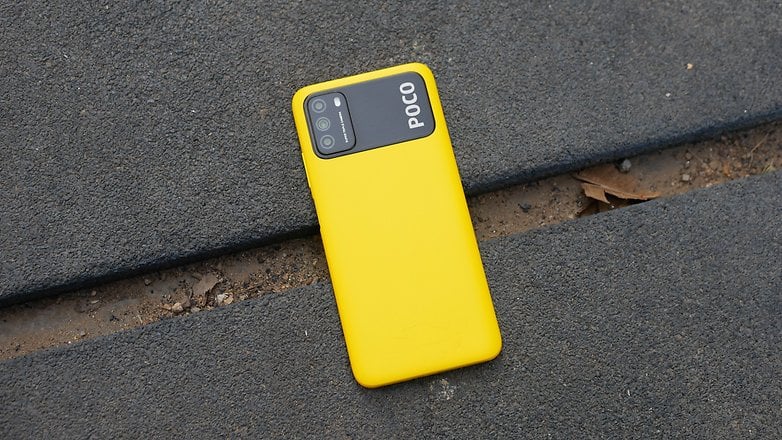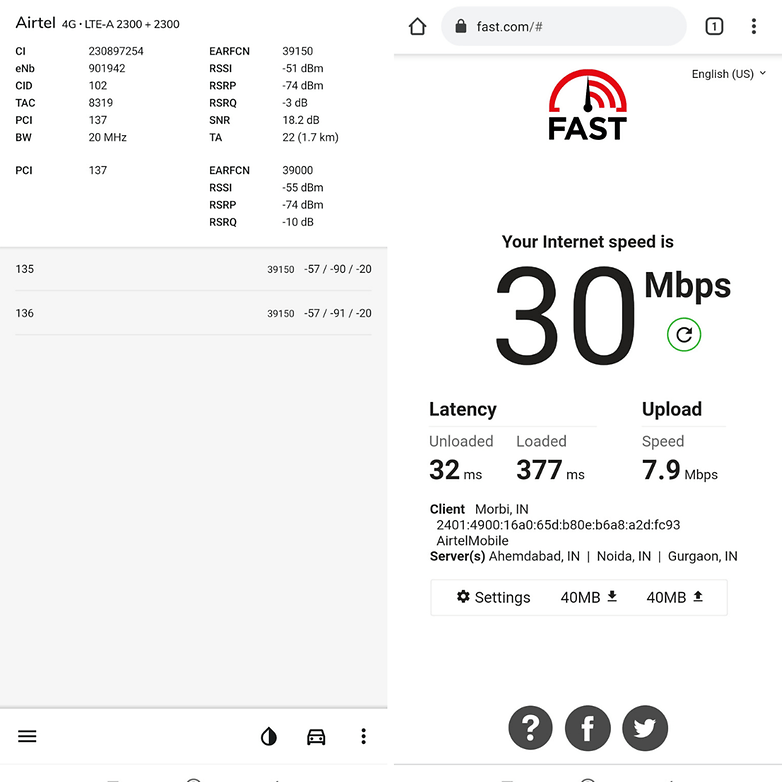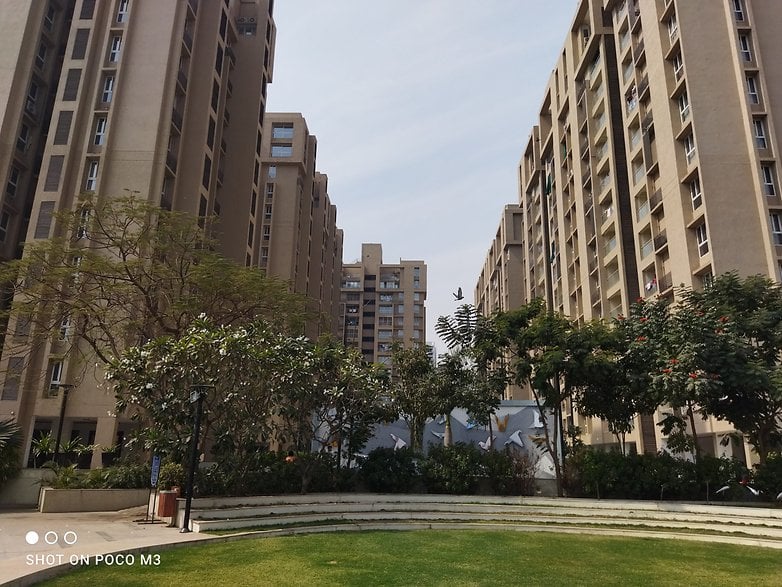Poco M3 Review: Come here, gorgeous!


Xiaomi and Realme are battling it out in the sub €200 smartphones segment and are known to offer compelling products in this price range. Today, we have managed to get hold of the Poco M3 for review. As one of Poco’s most affordable smartphones, we check how good the Poco M3 really is and if it can prove to be a capable budget smartphone for someone with a budget of less than Rs 12,000 in India and under €200 in Europe.
Good
- Head-turning looks, colour options
- Good, bright display
- Excellent battery life
- Stereo speakers rare in this segment
- 3.5mm jack, dedicated SD card slot, IR blaster
- Can handle games at lower quality settings
Bad
- Cameras are average
- UI lags at times
- No ultrawide camera
- Still on Android 10
- MIUI not for everyone

Get to know the Poco M3
- The Poco M3 is an entry-level, budget offering from Xiaomi-owned Poco.
- The variant being tested here is from India. The Euro-spec version has almost identical specifications but comes with lesser RAM (4GB of RAM instead of 6GB)
- There are two storage variants of the phone - 64GB (UFS 2.1) and 128GB (UFS 2.2).
- The phone gets the Qualcomm Snapdragon 662 SoC and offers good performance for the money spent.
- This is among the best looking phones in its price segment.
Where to buy the Poco M3
Design, Build Quality: This is how you do plastic phones
The Poco M3 is the perfect example of how to to do not completely cheap out on affordable phones. It looks extremely good for something that costs just €150. There are three colour options on offer; Yellow, Cool Blue and Power Black. The matte Yellow variant of the phone, in particular, has been extremely popular in most markets, and almost everyone I showed the phone to absolutely loved it. The bright colour on the Yellow and Blue variants is accentuated by the large back ‘camera module’ that covers most of the top rear. Don’t be deceived by the large size of the ‘module’ though, since the actual camera array only takes a part of that and includes three vertically stacked lenses.
The large, vertical Poco logo is unmissable and depending on which side of the design divide you stand; you might absolutely hate it or be completely enamoured by it. I, personally, didn’t mind the ‘in-your-face’ Poco logo.

The Poco M3 is a solidly built device and showed no signs of flex or weakness, and even the polycarbonate used is of high quality. Upon closer inspection, you will also notice that the rubberised rear panel of the phone mimics a leather texture and thus offers considerable grip while holding it. The volume rocker keys and the power button both offer a nice ‘clicky’ feeling and seem built to last. Note that the fingerprint scanner is integrated along with the power button on the right side.
Overall, there is nothing to complain about the build quality of the Poco M3 and I would go to the extent of saying that this is perhaps the best looking affordable smartphone I have used in ages.
Display: You get what you pay for

The 6.5-inch IPS LCD panel used by the Poco M3 is not a bad display at all. With a claimed brightness of 400 nits, it is on par with most other smartphones in its price bracket. The Poco M3 also offers FHD+ resolution in this price range, which isn’t usually the case on several devices in this price tag that only come equipped with an HD+ panel.
The display on the Poco M3 offers good viewing angles - although I did notice that the content got darker when the phone is held at a steep angle. This, however, should not be of concern to most users since no one really looks at displays at such steep angles.
What I liked about the Poco M3’s was the fact that the company gives users to customise the colour scheme from within the display settings. Out of the box, the phone is set to the ‘Automatic ‘ colour scheme. Those on the lookout for more accurate colours should opt for the ‘Standard’ colour scheme, which maintains the contrast levels at a constant value and offers fairly accurate colour temperatures.

One area where I found the display lacking was when using the phone outdoors. The screen feels fairly dim under direct sunlight, and users may have some difficulty in reading content off it in such scenarios with the added effect of reflections.
Software: MIUI minus the ads!
The Poco M3 runs MIUI 12 and during my time with the phone received a minor software update as well. The bad thing about the software is that the phone is still on Android 10. While this seems to be the norm on several affordable smartphones, it would have been great of the phone rocked a newer Android version.
The version of MIUI on the Poco phones differ slightly from its Redmi and Mi counterparts. The biggest difference - at least in India - is the lack of ads baked into UI elements. The phone does come with its share of bloatware, though, and does also prompt you to install the ‘Glance’ app that adds a bit of oomph to your lock screen. But then again, you can completely opt-out of this if you do not like what you see.

As for MIUI, it has evolved into quite a mature Android skin and offers a lot of custom features that many people like. While I would personally like to see MIUI go through a design overhaul (like ColorOS did), I am sure there are a lot of people out there who like the UI in its current form.
Performance: Gets the job done!

With the 11nm Snapdragon 662 SoC, blazing-fast performance is the last thing I expected from the Poco M3. But the SD 662 is competent enough to power the phone through almost all daily tasks you throw at it. The performance, generally, was on par with other competing SoCs like the Exynos 9611 from Samsung and the MediaTek Helio G85.
While I wasn’t able to play PUBG Mobile (because it is banned in India!), the phone was able to play Call of Duty: Mobile with the graphics quality set to medium. Even then, there were occasional dropped frames and laggy inputs. While you can play graphics-intensive games on this phone occasionally, I would opt for a device with at least a Snapdragon 7 series SoC for that purpose. The M3 did also show the tendency to warm up if I played games on it for too more than 10 odd minutes. The heat, however, was within tolerable limits.
I also noticed a fair amount of UI stutter occasionally - a problem that I also encountered on the Mi 10i which I tested last month. Overall, I am sure the Poco M3 will over satisfactory performance for a phone priced this low. Do note, however, that the variant I tested came with 6GB of RAM while the phone only gets 4GB RAM on the European variant. Another thing to be noted is the fact that the higher storage variant of the phone actually supports the slightly faster UFS 2.2 standard compare to UFS 2.1 on the 64Gb variant.
The Poco M3 supports most 4G LTE bands and is among the rare handsets in this price category to also support LTE-A (at least in India). This means the phone was able to make use of intra-band and inter-band carrier aggregation to boost data speeds. This is a feature that Poco’s main competitor Realme is yet to implement on some of its pricier models - leave alone the competitors to this model like the recently tested Realme 7i (Narzo 20 in India).

Call quality was generally great in both the VOWi-Fi (Wi-Fi calling) and VoLTE modes and most issues I faced with call quality was due to my carrier Airtel having poor network quality in my area. I used another SIM card from another provider to check if the voice quality issues persisted and am happy to report that it did not.
One feature that most people will certainly appreciate - especially at this price point - is the inclusion of stereo speakers on the POCO M3. While not as good as the ones on the Mi10i, the stereo speakers on this phone offer decent stereo separation for something this tiny. Correct me if I am wrong but the Poco M3 is perhaps the only smartphone to offer stereo speakers in its category.
Where is my ultrawide lens, Poco?

As formidable as the camera module on the Poco M3 looks, the specifications are, well, a bit tame. The bulk of the photography will be handled by the 48MP primary sensor that outputs pixel-binned 12MP shots. The lens used with this sensor is relatively fast, with an aperture of f/1.7. The Poco M3 also allows you to capture shots at the full 48MP resolution if you really do need it. The two other sensors at the back (2MP depth sensor and a 2MP macro), at least at first glance, seem to be there to just bump up the camera count.
To test it out, I actually covered the macro and depth sensors and took a closeup shot and checked it with a similar photo I captured without doing the same thing and to be honest, I did not notice a significant difference.
The first thing I noticed with the pictures taken on the Poco M3 was its tendency to oversaturate colours. On smaller displays, this actually works in favour of the phone since people in India and in Asian markets like oversaturated colours. I also posted a comparison photo on my Twitter to show the differences in colour saturation between the Mi10i and the Poco M3.

The general tendency to oversaturate colours aside, I thought the daylight photos captured by the Poco M3 are on par with what would expect on a budget Android smartphone. One issue I did notice, however, was visible noise on photos taken in daylight, especially in the shadows. On some macro shots, there was noise in the brighter areas as well. This seems to be more of an issue with software optimization than a case of the hardware not being capable enough.

Low light shots are best avoided with the Poco M3. Apart from a noticeable amount of lens flare (yes, I did clean the lens), on the landscape shots, the amount of noise I encountered on most low light shots was a bit too much. Then again, I am ready to cut some slack for this phone because of its price tag.

The 8MP selfie camera was average at best, and the performance was good - especially during the daytime. The phone is also capable of capturing some decent portraits using the front camera.
One thing that I felt the Poco M3 solely missed was an ultra-wide camera. I am sure the company did take a call to not include one after lots of deliberations, but yeah, a wide-angle lens would have made the phone a bit more versatile.
Never-ending battery life
The massive 6000mAh battery on the Poco M3 is more than capable of offering almost two days of battery life even with fairly intensive usage. I was continuously able to eke more than 8 hours of screen time with the brightness set to around 60 percent. Even if you bump the brightness up, you can safely expect more than a day’s worth of battery with the phone. It took me nearly three hours to charge the Poco M3 from 0 to 100% with the supplied 22.5W charger. Interestingly, the phone itself only supports 18W fast charging.
The large battery capacity also means that you can use the Poco M3 as a power bank to charge small accessories. This is enabled with the reverse charging feature that the phone gets.
Things you should know
- The yellow colour variant I got was durable but did tend to get dirty very easily
- The supplied case was of OK quality but a better cover is recommended
- The display gets Gorilla Glass 3 protection and was quite durable
- Thanks to support for 5 GHz WiFi, I got excellent speeds on my home Wi-Fi connection
- Carrier aggregation support translates to improved data throughput on 4G LTE networks
Conclusion

There is a lot going for the Poco M3 is given its attractive price- especially because it comes with several features that most of its competitors don’t offer. And some of these are crucial aspects that really do make a difference to your smartphone ownership experience (carrier aggregation and 5 GHz Wi-Fi, for example). The phone is also quite the looker and will definitely command a second glance, especially in the Yellow colour option. And that is one attribute that no other €150 phone can stake claim to as of now.
Some of the less rosy things include the lack of a wide-angle camera, and the hit and miss image quality with the existing cameras and that fact that it still runs Android 10. There is scope for improvement on the software front as well with noticeable UI stutter and occasional lags while multitasking. But most of these things can be fixed via software updates.
To conclude, I feel that the Poco M3 is one of the best smartphones in its category and offers serious value for your money. For the same reason, it wins an easy recommendation from us here at NextPit. If you are on the lookout for a new smartphone under €200 in Europe and Rs 12,000 in India, the Poco M3 is definitely one handset you should consider.













